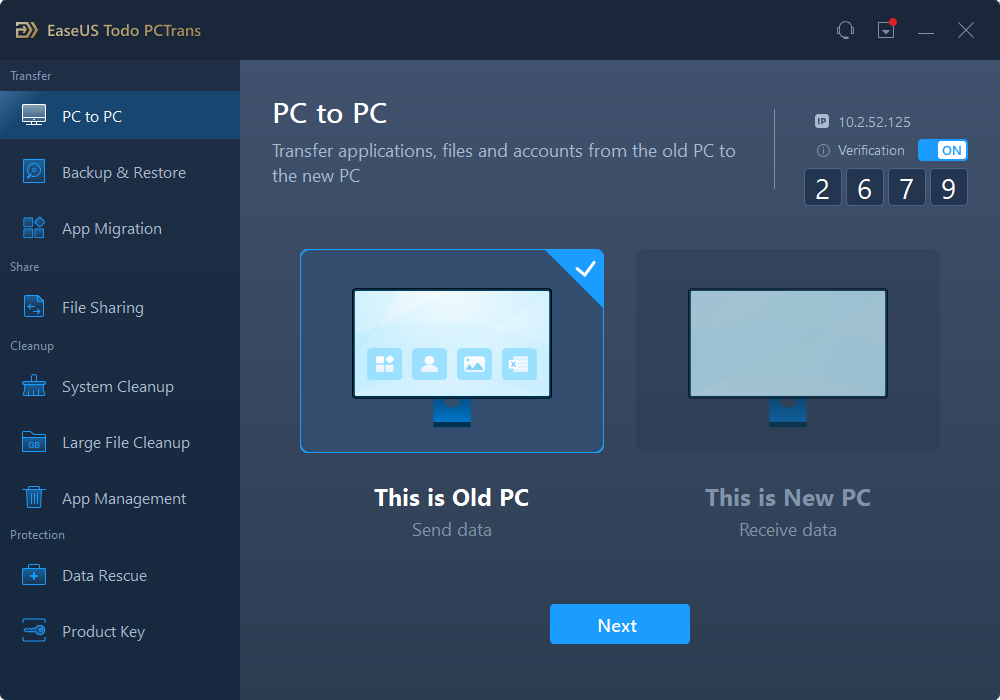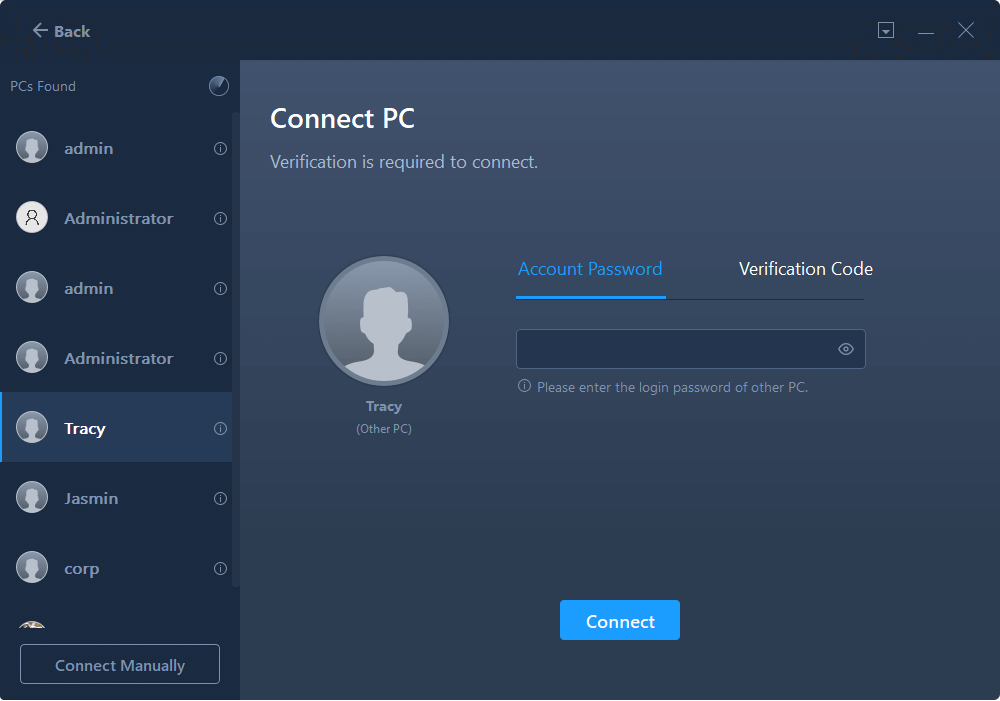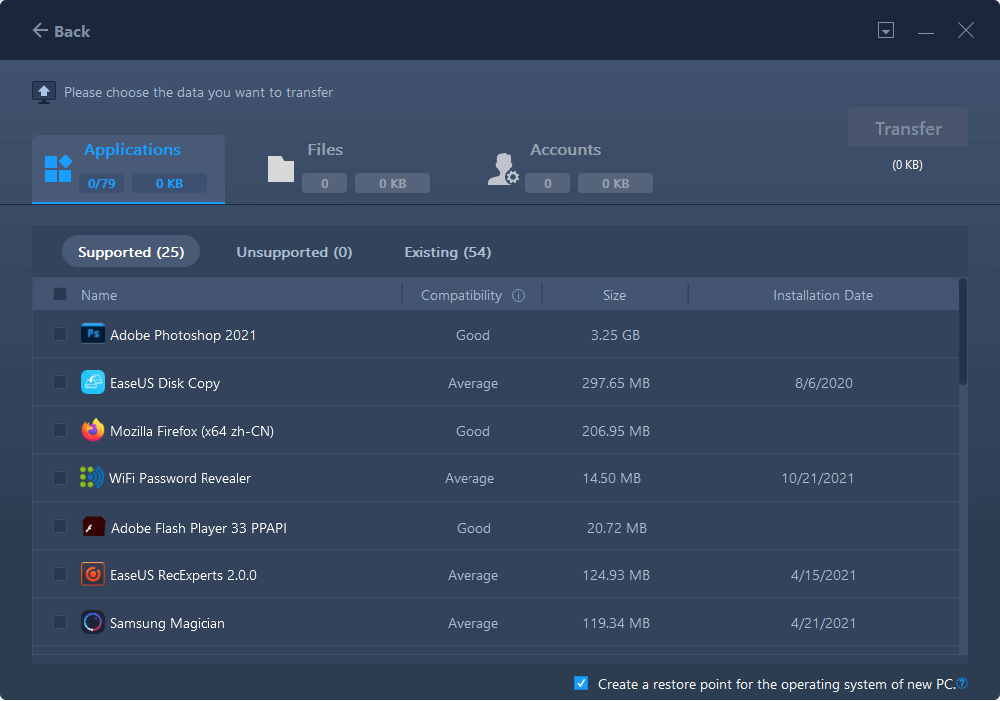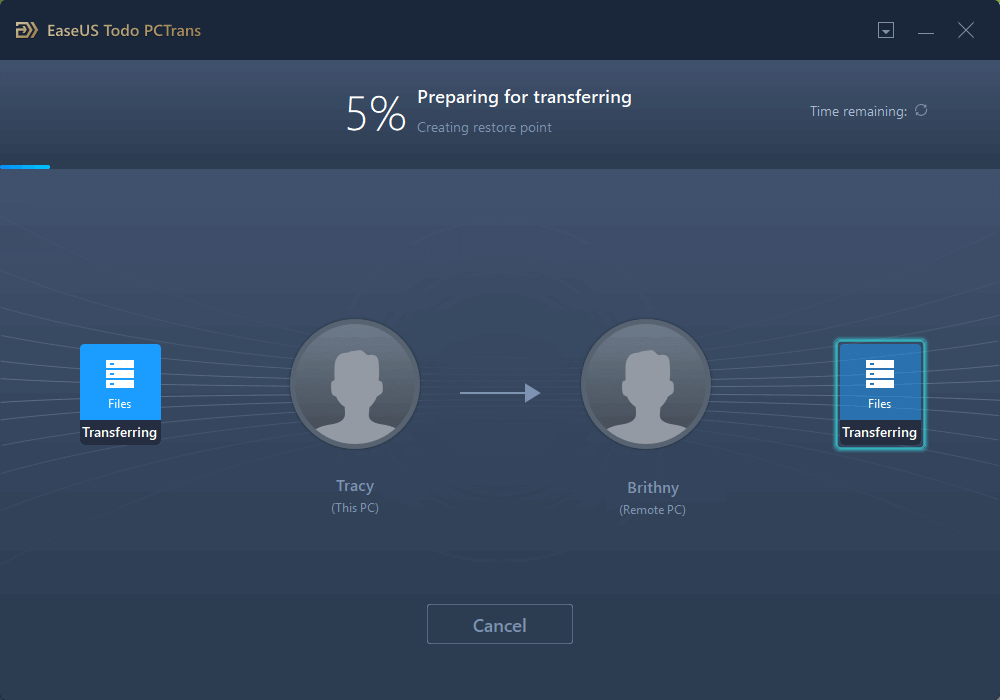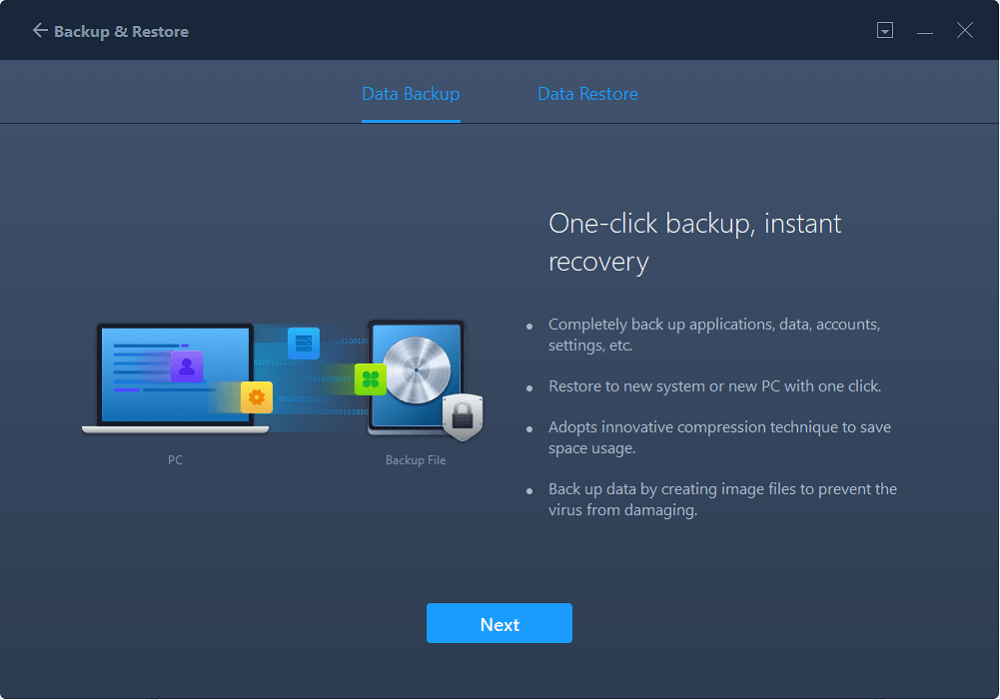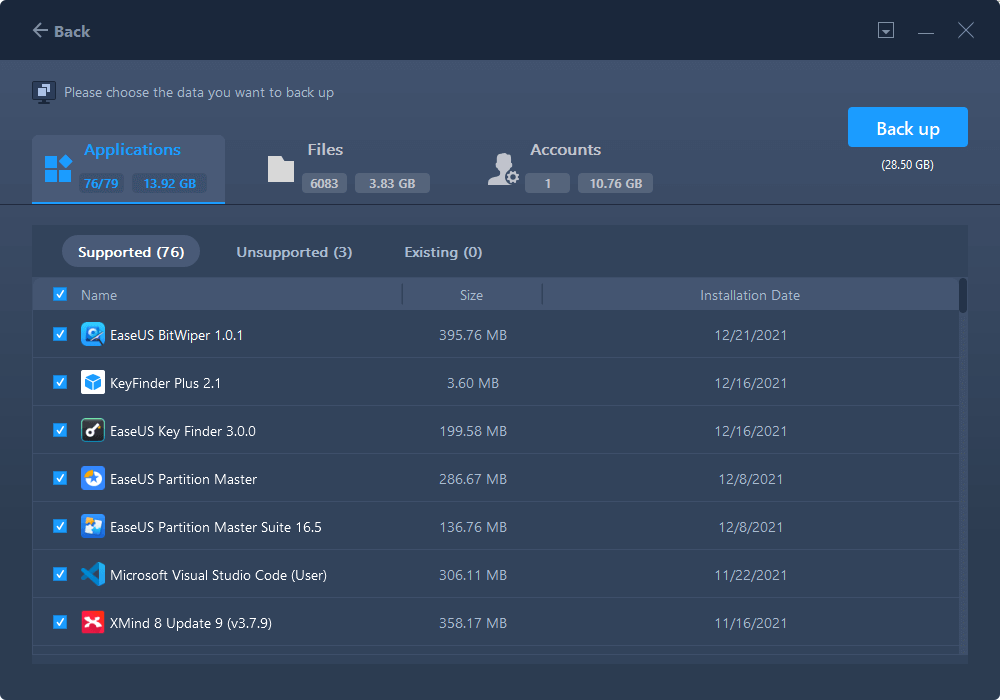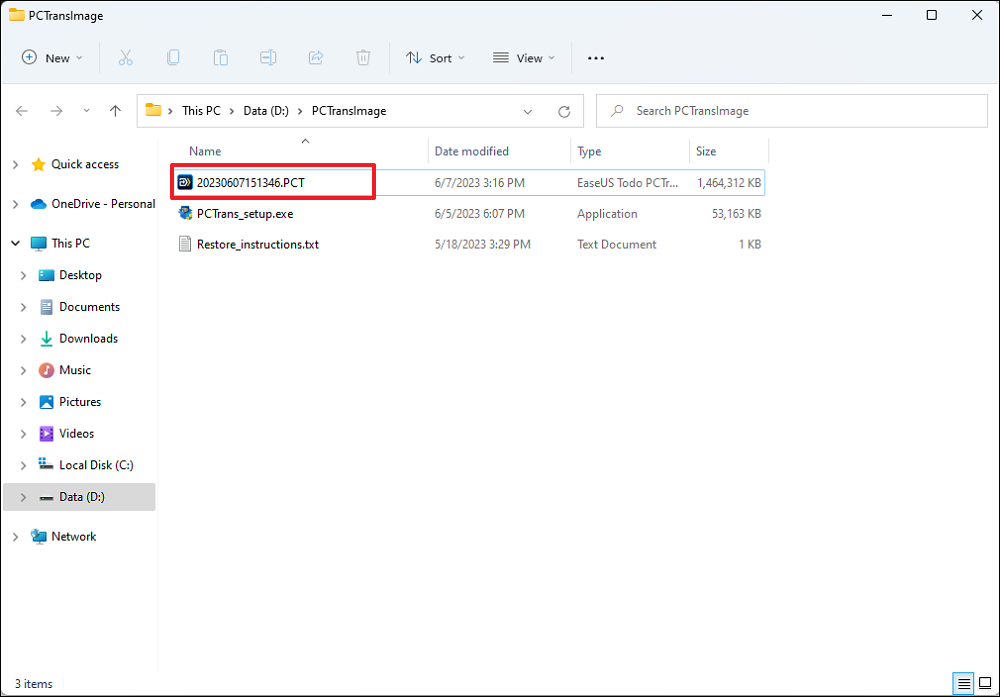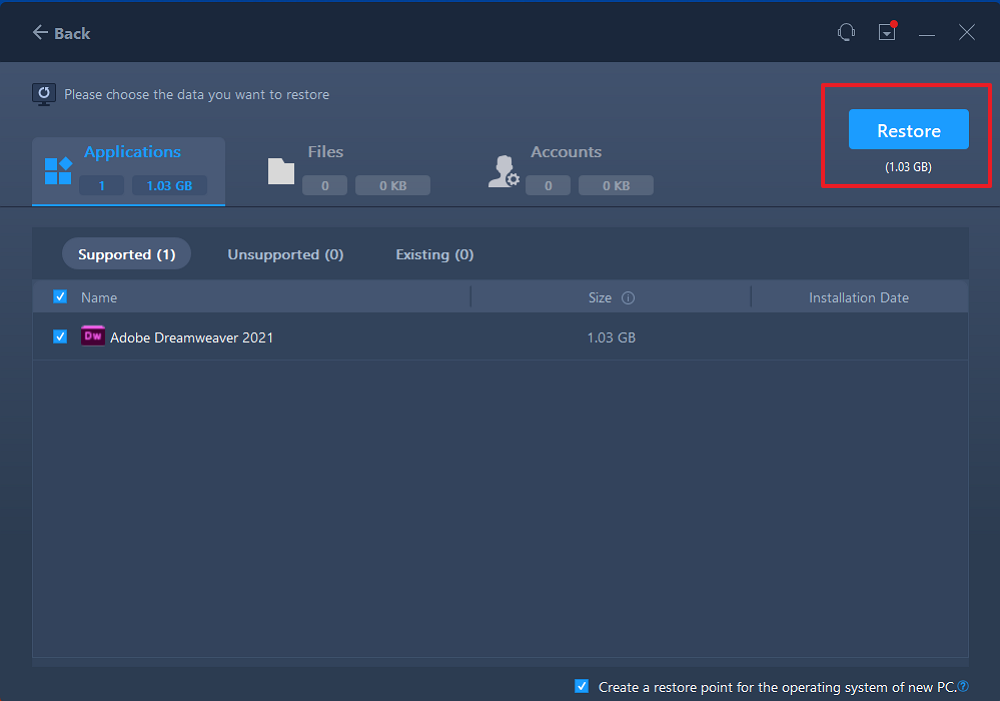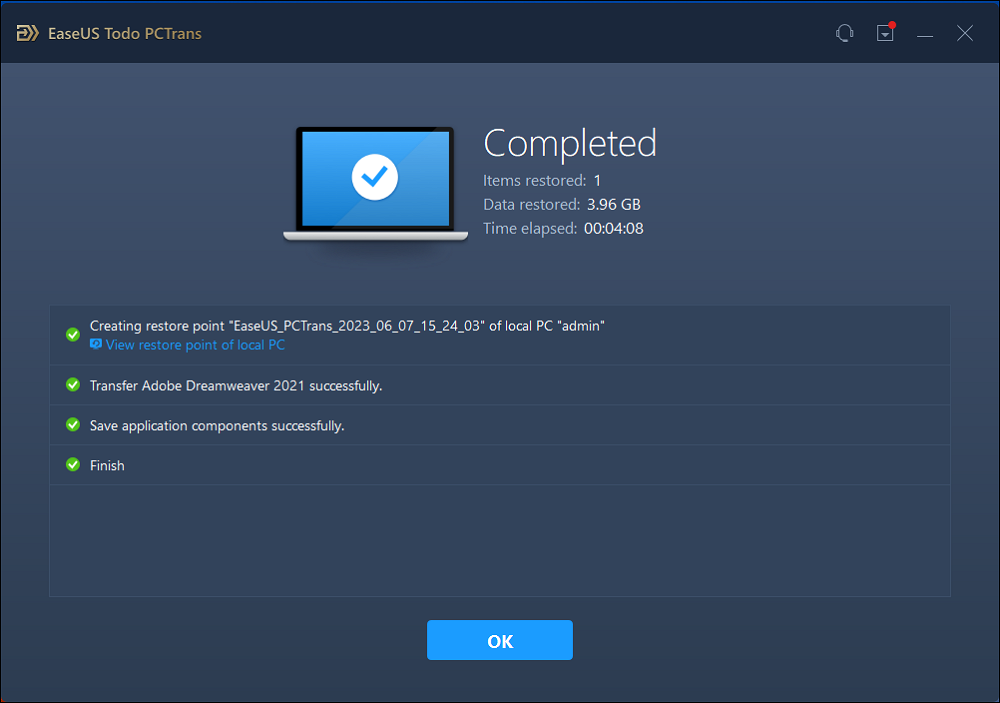- Remove From My Forums
-
Question
-
Hello,
I really need an advises and guide on this project accordingly.
Purpose: Upgrade from Window server 2008 r2 std to Window server 2016 std.
1. Are there any way to upgrade accordingly as a bove?
2. Do i have to upgrade from 2008 r2 to window server 2012 std and upgrade to window server 2016 std?
3. Are there any senario on this or any other advice?— There are about 30 user and machine that is in a network ( client window 10 ).
— The requirement of hardware is avialable for window server 2016 std.Thank you.
-
Moved by
Sunday, October 8, 2017 10:14 AM
wrong forum
-
Moved by
Answers
-
-
Marked as answer by
Sockea PHANN
Friday, October 20, 2017 6:39 AM
-
Marked as answer by
-
Hi Sockea,
Check the following link, you can find difference between Upgrade & Migration, later you can decide which one is best for you.
https://technet.microsoft.com/en-us/library/cc742466(v=ws.10).aspx
As of my knowledge, if you are good at technology go for migration, if not Upgrade is best.
Consider impact on existing Roles/Applications before proceeding
NTRao
-
Marked as answer by
Sockea PHANN
Friday, October 20, 2017 6:39 AM
-
Marked as answer by
-
Hi,
In general, there are 2 ways for system upgrading:
1. In-place upgrade
2. MigrationAs NTRao mentioned, it does not support in-place upgrade from Windows Server 2008 R2 to Windows Server 2016. It should be at least Windows Server 2012.
Please note that, there are limitations for in-place upgrade, such as OS version, language and etc. Please reference section “Upgrading previous retail versions of Windows Server to Windows Server 2016” in below link for the details:
https://docs.microsoft.com/en-us/windows-server/get-started/supported-upgrade-pathsAlso, please confirm that installed server roles are supported to be upgraded —
Server role upgrade and migration matrix for Windows Server 2016:
https://docs.microsoft.com/en-us/windows-server/get-started/server-role-upgradeability-tableIf all pre-requirements are met, you can consider of in-place upgrading:
Windows Server 2008 R2 -> Windows Server 2012/2012 R2 -> Windows Server 2016I would also recommend you to consider of migration, which will also keep your current configuration and data. if you still want to use current hardware for new server system, you can using a virtual system as transition and migrate it back to original hardware
at last.
Best Regards,
Eve Wang
Please remember to mark the replies as answers if they help.
If you have feedback for TechNet Subscriber Support, contact
tnmff@microsoft.com.-
Edited by
Eve WangMicrosoft contingent staff
Monday, October 9, 2017 5:59 AM -
Proposed as answer by
Nedim Mehic
Monday, October 16, 2017 5:47 AM -
Marked as answer by
Sockea PHANN
Friday, October 20, 2017 4:10 AM
-
Edited by
-
Dear Eve Wang and NTRao,
Thank you for your respond. I am really appreciate this. I am still thinking about the Pros and Cons of the Process. As, i am new for this project and i am a little bit serious on this.
anyways, i would seek for your advice for some more accordingly. If i would consider for clean installation or upgrade. Are there any Pros and Cons in my situation?
If i am going to do migration. i need to upgrade my 2008 r2 std to 2012 std. So, i could migrate to 2016 std.
thank you.
Best Regards,
Sockea
-
Marked as answer by
Sockea PHANN
Friday, October 20, 2017 6:39 AM
-
Marked as answer by
-
Hi,
If you want to use the same hardware – replace WS 2008 R2 with WS 2016 on the same device(server hardware), in general, we use in-place upgrade. However, not all of server roles are supported to be in-place upgraded, and during in-place upgrading, there is
a certain risk of affecting existing application/software/system files.If WS 2016 is installed on a new hardware, and you want to keep current configuration/data on WS 2008 R2, migration is recommended, general processes are:
1. Clean install a new WS 2016.
2. Join it to domain.
3. Migrating server roles from WS 2008 R2 to WS 2016 and moving data.
4. Remove WS 2008 R2.If you do not want to keep current configuration/data on WS 2008 R2, and you need to use the hardware to install WS 2016, you can have a clean installation, and manually re-configure WS 2016.
Best Regards,
Eve Wang
Please remember to mark the replies as answers if they help.
If you have feedback for TechNet Subscriber Support, contact
tnmff@microsoft.com.-
Marked as answer by
Sockea PHANN
Friday, October 20, 2017 4:13 AM
-
Marked as answer by
Для локальных серверов нет прямого пути обновления с Windows Server 2008 R2 до Windows Server 2016 или более поздней версии. Вместо этого обновите сначала до Windows Server 2012 R2, а затем обновите до Windows Server 2016.… Обновления на месте поддерживаются только на том же языке.
Можно ли обновить Windows Server 2008 R2 до 2019?
Путь обновления
Вы можете напрямую выполнить обновление до Windows Server 2019 на месте с Windows Server 2016 и Windows Server 2012 R2. Это означает, что для обновления с Windows Server 2008 R2 до Windows Server 2019 у вас будет два последовательных процесса обновления.
Совместим ли SQL Server 2008 R2 с Windows Server 2016?
SQL Server 2008 R2 не поддерживается в Windows 10 или Windows Server 2016.
Можете ли вы обновить Windows Server 2008 до Windows 10?
7 ответов. Если вы спрашиваете о совместимости Windows 10 с доменом 2008 R2, здесь нет никаких проблем.
Как мне обновить 2008 R2 до 2012r2?
Чтобы выполнить обновление
- Убедитесь, что значение BuildLabEx говорит о том, что вы используете Windows Server 2008 R2.
- Найдите установочный носитель Windows Server 2012 R2 и выберите setup.exe.
- Выберите Да, чтобы начать процесс установки.
- На экране Windows Server 2012 R2 выберите Установить сейчас.
16 центов 2019 г.
Поддерживается ли по-прежнему Windows Server 2012 R2?
Тем не менее, Windows Server 2012 R2 вошла в основную поддержку 25 ноября 2013 года, но окончание основной поддержки — 9 января 2018 года, а конец расширенной — 10 января 2023 года.
Windows Server 2019 бесплатна?
Windows Server 2019 в локальной среде
Начните с 180-дневной бесплатной пробной версии.
Можно ли обновить Windows Server 2016 до 2019?
Windows Server 2016 можно обновить до Windows Server 2019 за один процесс обновления. Обновление Windows Server не обязательно должно быть капитальным ремонтом или новой установкой.
Как мне перейти с Windows Server 2016 на 2019?
Чтобы выполнить обновление
- Убедитесь, что значение BuildLabEx указывает, что вы используете Windows Server 2016.
- Найдите установочный носитель Windows Server 2019 и выберите setup.exe.
- Выберите Да, чтобы начать процесс установки.
16 центов 2019 г.
Может ли SQL Server 2008 R2 работать в Windows Server 2019?
Тем не менее, SQL Server 2008 может размещать базы данных, работающие на уровне совместимости 80 и 90, поэтому вы можете использовать SQL Server 2008 в качестве посредника между SQL Server 2000 и SQL Server 2019. Это не поддерживается для производства.
Может ли SQL Server 2019 работать в Windows Server 2016?
Программа установки SQL Server устанавливает следующие программные компоненты, необходимые для работы продукта: Собственный клиент SQL Server. Файлы поддержки программы установки SQL Server.
…
Программные требования.
| Компонент | Требование |
|---|---|
| Операционная система | Windows 10 TH1 1507 или выше Windows Server 2016 или выше |
Может ли SQL Server 2008 R2 работать в Windows Server 2012?
Только SQL Server 2008 R2 с пакетом обновления 2 (SP2) сертифицирован для работы в Windows Server 2012 R2. Поскольку базовая установка не поставляется с обновлением службы, мне придется пройти процесс установки с редкими ударами, а затем применить пакет обновления.
Сколько времени нужно, чтобы обновить Windows Server 2008 до 2012?
Это сохранит существующие файлы, настройки и приложения и обновит наш сервер до Windows 2012. Обновление займет около 20 минут.
Можно ли обновить Windows Server 2008 до 2012?
1 ответ. Да, вы можете выполнить обновление до версии Windows Server 2, отличной от R2012.
Что такое обновление Windows Server на месте?
Если вы хотите сохранить то же оборудование и все роли сервера, которые вы настроили, не выравнивая сервер, вам нужно выполнить обновление на месте, с помощью которого вы переходите от старой операционной системы к новой, сохраняя настройки, роли сервера и данные в неизменном виде.
When we talk about how to migrate Windows Server 2008 to 2016 step by step, it usually refers to two requirements: one is to upgrade Windows Server system from 2008 R2 to 2016, and the other is migrate data and files from Windows Server 2008 to 2016 directly. You can check the complete guide to upgrade Windows Server 2008 R2 to 2016, including the migration of the Active Directory (AD) environment, Domain Naming System (DNS) and Dynamic Host Configuration Protocol (DHCP).
In this article, we mainly focus on how to migrate data, applications, or user account from Windows Server 2008 to 2016 with an easy Windows data transfer tool.
EaseUS Todo PCTrans — The Ultimate Windows Data Transfer Tool
EaseUS Todo PCTrans is one of the best Windows data transfer applications for files, applications, user accounts, and settings sharing between two Windows PCs or Windows Servers. For Windows Server migration, it has the following key features.
01
For all Windows Server data copying
It supports data, program, user profiles and settings migration between Windows Servers in one-click without data loss.
02
Simple solution and interface
The graphical user interface makes it intuitive to transfer data in simple clicks. Both computer experts and beginners can get started quickly.
03
3 flexible transfer modes
You can choose the mode of transmission according to your actual needs, transfer via PC to PC, locally, or via backup files.
04
Full support for Windows Server
It’s compatible with all Windows Server versions, including Windows Server 2019, 2016, 2012, 2008, and 2003.
You can learn from the following instructions on how to migrate Windows Server 2008 to 2016, including transfer files over the network (on the same LAN) and migrate data using backup files offline. First, click the button below to install EaseUS Todo PCTrans on your computer if you haven’t installed it yet.
EaseUS Todo PCTrans Technician
- ☆ Deploy & install Todo PCTrans on multiple PCs.
- Transfer unlimited files, programs, apps between Servers.
- Transfer account, domain account, and settings.
- Data rescue, find product key of installed programs.
- One license for multiple PCs.
Migrate Windows Server 2008 to 2016 via Network Connection
Connect your two Windows Server computers on the same LAN and transfer files, apps with account settings through the network.
Step 1. Launch EaseUS Todo PCTrans on your source and target computers, connect both PCs via the internet.
1. At the «PC to PC» section, click «PC to PC» to continue.
2. Select your target computer via its device name, then enter its account password or verification code and select the transfer direction. Then click «Connect» to continue.
You can check the verification code on the right top of «PC to PC» mainscreen on the target computer.
Step 2. Select the categories Applications, Files, and Accounts to transfer via the internet.
If you want to transfer data selectively, click «Edit» under each category, and choose the specific items.
Step 3. Click «Transfer» to start transferring your apps/files/accounts from one computer to another computer via the Internet.
Also read: How to share files between two laptops using WiFi in Windows 10
Transfer Data from Windows Server 2008 to 2016 via Backup Files
This Windows data migration program enables you to create backups of your files, programs & accounts on the Windows Server 2008, and then restore and move them to the Windows Server 2016 or 2019.
Step 1. Create a backup file.
1. Connect your USB (flash) drive/external hard drive to your source computer. Launch Todo PCTrans, click «Backup & Restore > Start» on the main screen.
2. Select «Data Backup» to move on.
3. Hover over «Applications», «Files» and «Accounts» columns to choose the specific data, applications, etc., and click «Back up» to create a backup file.
Step 2. Recover via the created backup file.
1. Plugin your USB drive which stores the created backup file to the target PC and open EaseUS Todo PCTrans. Click «Backup & Restore > Start > Data Restore».
2. Click «Browse» to locate the Image file. Then, choose «Restore» and go to the next step.
3. Now, you can select Applications/Files/Accounts you want to restore.
Over on Applications, Files, or Accounts to choose the specific data you want transfer flexibly. Click «Restore» to confirm. Besides, you can also click the «Migration Settings» icon to change the target path to recover and save the files.
Conclusion
To migrate from old Windows Server 2003 or 2008 to new Windows Server 2012, 2016, or 2019, EaseUS Todo PCTrans provides you one-stop solutions to copy files, applications, as well as other indispensable data, which are as simple as a click away. If you don’t know how to migrate data between two Windows Servers or how to do it effortlessly, be sure to try this tool out.
Migrate Windows Server 2008 to 2016 FAQs
Check the following frequently asked questions on Windows Server 2008 to 2016 migration.
1. Can Windows Server 2008 be upgraded to 2016?
You can’t upgrade Windows Server 2008 to 2016 directly unless performing a clean installation. If you want to complete an in-place upgrade, you need to first upgrade from Windows Server 2008 to 2012, and then upgrade to 2016.
2. How do I move DHCP from 2008 to 2016?
How to migrate DHCP from Windows Server 2008 to 2012/2016:
- Log on to the old/existing DHCP server.
- Open the Command Prompt and run as Administrator.
- On the Action menu (from within the DHCP management console), click «Backup».
- In CMD, type netsh dhcp server export C:Users\Desktopdhcp.txt all, and then press ENTER.
- Install the DHCP role on the new (2012/2016) DHCP server using the Server Manager.
- Copy the exported DHCP text file to the desktop of the new DHCP server.
- Make sure that the DHCP service is installed and started on the new DHCP server.
- Open the command prompt as Administrator (on the new server)
- Type netsh dhcp server import C:Users\Desktopdhcp.txt all, and then press ENTER
- Open the DHCP management console on the new server.
- In the console tree, right-click DHCP and select «Authorize».
3. Can Windows Server 2012 be upgraded to 2016?
You can only upgrade Windows Server 2012 to Server 2016. You can’t skip the upgrade, which means you’re going to need to plan ahead for a more substantial upgrade, like you can’t upgrade Windows Server 2012 Standard edition to Windows Server 2016 Datacenter edition.
4. Can Windows Server 2008 be upgraded to 2012?
Yes, you can upgrade Windows server 2008 R2 Enterprise to Windows Server 2012 Datacenter. After upgrading, you can log in to the server and check for the edition. Click on «Server Manager», then «Local Server», and check the properties of the server. You a see the operating system version is Microsoft Windows Server 2012 Datacenter.
I’ve got several web servers running Server 2008r2 SP2 Standard with SQL Server 2014. What is the best practice / easiest in-place upgrade path to get to Windows Server 2016?
In testing, I’m only able to upgrade from 2008r2 to 2012 and then upgrade again from 2012 to 2016. We’ve got a decent amount of configuration done on these and quite a few websites running on them. With that in mind having to upgrade twice isn’t ideal due to the downtime involved. Is there any way around this? (change license keys or some other solution?)
Thanks!
Update in 2020:
We’re finally pulling the plug and upgrading our remaining couple 2008R2 servers. For anyone wondering here’s what we’re (generally doing):
- If SQL Server is running, we’re moving from SQL Server 2008R2 to SQL
Server 2014 before upgrading Windows (so there’s some overlap). I’m
also upgrading to the latest 2014 SP3 + the latest CU4 (this website
is great for that sort of thing:
https://buildnumbers.wordpress.com/sqlserver/). - You can then go from Server 2008R2 to 2012R2.
- We’re then enabling and running disk cleanup.
- If necessary we’re then doing another upgrade for SQL to SQL Server 2016 / SQL 2019.
- If necessary we’re then doing another OS upgrade from Server 2012R2 directly to Server 2019 or if we’re taking it slower on some other critical servers we’re just upgrading to Server 2016 for the time being.
After each upgrade step we’re ensuring we have quality backups (for us VMware snapshots / DB backups) and also checking each piece of software is functioning on every server. Slow and steady wins the race.
And that’s enough quick work to get off of 2008R2 and avoid ESU licenses (if you can even purchase them — it’s been basically impossible for us to get extended security update keys.)
asked Dec 13, 2016 at 3:06
cvocvocvocvo
1832 gold badges3 silver badges8 bronze badges
3
If you must stay with the same hardware/machines, then a two-step upgrade is your only option:
2008 to 2012, then 2012 to 2016.
But, if you have a virtual infrastructure or can use additional hardware, you can treat this as a migration rather than an upgrade.
Build new SQL servers and new IIS hosts, and then migrate the applications rather than upgrade the OSes.
answered Mar 15, 2017 at 21:59
music2myearmusic2myear
1,8933 gold badges26 silver badges51 bronze badges
1
I’m afraid not as there is no in-place upgrade path from 2008 to 2016. At least not from Microsoft. Not sure if there’re 3rd party utilities out there to achieve this.
answered Mar 9, 2017 at 6:42
Posted by charles1539 2017-03-06T15:29:36Z
Is an In-place Upgrade from Windows Server 2008 R2 Std to Windows Server 2016 Std possible? Meaning, direct upgrade without first stopping by Server 2012.
I thought there would have been lots of people doing this sort of upgrade, but I dont see much chatter about if it works, or how well it works. Any info greatly appreciated!
10 Replies
-
Let’s take a step back…why would you want to do this instead of doing a migration?
99% of people on here are going to tell you that you need to migrate, not do an in-place upgrade, and I’m one of them.
Was this post helpful?
thumb_up
thumb_down
-
I thought I read before that 2008 R2 to 2016 is not supported only 2012 > 2016.
Was this post helpful?
thumb_up
thumb_down
-
Here’s a link to upgrade options, and I agree Carl, I never upgrade if possible always stand up a fresh server and then migrate what you need.
Was this post helpful?
thumb_up
thumb_down
-
Upgrades should be avoided even if that upgrade is supported. With virtualization it’s so easy to get a new server up and running that there really is very few scenarios where an upgrade should be done.
Was this post helpful?
thumb_up
thumb_down
-
Is an In-place Upgrade from Windows Server 2008 R2 Std to Windows Server 2016 Std possible? Meaning, direct upgrade without first stopping by Server 2012.
I believe so.
charles1539 wrote:
I thought there would have been lots of people doing this sort of upgrade, but I dont see much chatter about if it works, or how well it works. Any info greatly appreciated!
That’s because it’s server suicide. It’s the worst thing you can do. Not only do you have problems from the old OS you have a whole bunch of new ones. Never do this.
Was this post helpful?
thumb_up
thumb_down
-
Thank you for the replies.
I was thinking Upgrade only to keep it as simple as possible. My scenario is this:
Physcial Server A: 2008 R2, Two roles: (1) File Services (2) Web Server IIS
Physical
Server B:
2008 R2, Two roles: (1) File Services (2) Web Server IIS
Neither are virtualized, although we may have the ability to spin up a new server on them. Both are very plain jane servers.
We have software (XMPIE) that no longer supports Server 2008 R2. I am looking for the easiest method to upgrade to a new Server OS to try and keep the software undisturbed, if possible. Upgrade seemed to make sense based on https://technet.microsoft.com/en-us/windows-server-docs/get-started/server-role-upgradeability-table Opens a new window .
Are you saying to spin up a virtual server on the existing hardware, migrate. Or spin up a new virtual server on a new physical machine and migrate? Keeping in mind we have never migrated a server before.
Was this post helpful?
thumb_up
thumb_down
-
charles1539 wrote:
I was thinking Upgrade only to keep it as simple as possible.
That means avoiding the in place upgrade.
charles1539 wrote:
Are you saying to spin up a virtual server on the existing hardware, migrate. Or spin up a new virtual server on a new physical machine and migrate? Keeping in mind we have never migrated a server before.
Are you able to take one of the two out for a while? If so, you could rebuild it as Hyper-V then create a VM on it for your server roles.
If you’ve never done anything like this you might want to get a consultant in for a few weeks to do this for you.
Was this post helpful?
thumb_up
thumb_down
-
Agreed, see if you can combine the work loads and install a hypervisor on the free server.
Spin up VMs and migrate your workloads to them.
Was this post helpful?
thumb_up
thumb_down
-
Probably best to hire a consultant for this if you’ve never migrated a server before. You definitely want your servers to be virtualized, so if you had the budget new hardware would be ideal here. You could Bring in a Hyper-V host and spin up new virtual servers to migrate to. This way you can keep your hardware up while you get your new environment ready. Otherwise, you’ll have to follow Gary’s advice to rebuild.
The biggest reason to avoid the upgrade is that application may totally break( I would say it most likely would) if you do an in-place upgrade. At best you’ll have to do some reconfiguration, but it would be a hard pass for me.
Was this post helpful?
thumb_up
thumb_down
-
I just stumbled across this thread and realized that no one definitively answered your yes/no question (although Gary D Williams’ initial response got really close).
The answer is: No, you can’t do an in place upgrade from Windows Server 2008 R2 to Windows Server 2016 R2 without upgrading to Windows Server 2012 in between. It just isn’t a supported upgrade path. The jump is too great.
Now that your question has been answered, I agree that if you can manage it you should always migrate. Virtualization makes that easier and you should be able to do that for no cost with your configuration if you use the free Hyper-V server as your hypervisor.
Was this post helpful?
thumb_up
thumb_down
Read these next…
Merging two domains with the same name?
Windows
It seems that a possible company merger is coming down the pipeline, but as luck would have it, the active directory domains have the same name (ie, domain.local)The domain I maintain is running server 2019 at a 2016/2019 functional level.The other domain…
How can I track changes to network adapter configuration
Windows
Ok, so we have a site where most of the users have local admin and they have a small group of users who «know about computers». The site runs pretty smoothly but we’re seeing a bunch of users who are able to function on the wired network but aren’t able …
Snap! — Cooling in Antarctica, Back to the Moon, Biological Clothing, AI Sci-Fi
Spiceworks Originals
Your daily dose of tech news, in brief.
Welcome to the Snap!
Flashback: February 3, 1986: The term “vaporware” is first used by Philip Elmer-DeWitt in a TIME magazine article (Read more HERE.)
Bonus Flashback: February 3, 1966: Luna 9 Lan…
Safety Glasses with Glasses
Networking
I’m going to be pulling some new wire soon through some dirty drop ceilings, and without fail, at some point I always get a piece of something in my eye at some point during the job.I’d like to avoid that this time.I have struggled to find safety glasses …
AD on-premise courses
IT & Tech Careers
Hello!We have a predominantly on-prem AD environment. Whilst we will be moving to M365 that will be in a while.We have a number of junior staff that need basic instruction in Active Directory and file/folder permissions. I recall many years ago the MC…
Прочитано:
14 629
Задача: Нужно проработать процесс миграции домена на базе Windows Server 2008 R2 на Windows Server 2016
От моего коллеги по работе поступила задумка, а реально ли смигрировать текущий домен контроллер на базе Windows Server 2008 R2 Enterprise на систему с осью Windows Server 2016 Standard, в итоге новый контроллер домена будет обладать повышенными возможностями по управлению инфраструктурой. Да и пора уже избавиться от железной составляющей текущего домена на переход под Hyper-V система виртуализации которой используется в организации где я сейчас работаю.
Данная задача прорабатывается под Virtulbox основной системы Ubuntu 18.04 Desktop amd64 ноутбука Lenovo E555
Исходные данные:
- srv-dc1.polygon.local (на базе Windows Server 2008 R2 Enterprise) с ролями: AD DC,DHCP,DNS
- IP address: 10.90.90.2/24
C:UsersAdministrator>netsh firewall set icmpsetting 8 enable
- Login: ekzorchik
- Pass: 712mbddr@
- Group: Domain Admins, Schema Admins, Enterprise Admins
C:Windowssystem32>netdom query fsmo
Schema master srv-dc1.polygon.localDomain naming master srv-dc1.polygon.localPDC srv-dc1.polygon.localRID pool manager srv-dc1.polygon.localInfrastructure master srv-dc1.polygon.localThe command completed successfully.
srv-dc2.polygon.local (на базе Windows Server 2016) пока без ролей
IP address: 10.90.90.3/24
C:UsersАдминистратор>netsh firewall set icmpsetting 8 enable
Шаг №1: Авторизуюсь под локальной учетной записью «Администратор» на srv-dc2. Ввожу данную систему в домен polygon.local.
Win + R → control.exe → Система — «Изменить параметры» — вкладка «Имя компьютера» окна «Свойства системы» нажимаю «Изменить», отмечаю галочкой «Является членом»: Домена и указываю домен: polygon.local, затем нажимаю кнопку «ОК».
[stextbox id=’alert’]
На заметку: Не забудьте в настройках сетевой карты хоста srv-dc2 указать DNS сервер системы srv-dc1 иначе получите ошибку: «При запросе DNS записи ресурса размещения службы (SRV), используемой для нахождения контроллера домена Active Directory для домена «polygon.local«, произошла ошибка:
Произошла ошибка: «Для локальной системы не настроено ни одного DNS-сервера.»»
[/stextbox]
Итак, DNS-сервер прописан в свойствах сетевого адаптера, при попытке ввода системы в домен понадобится знание учетных данных обладающих правами «Администраторы Домена (Domain Admins) или обладающих правами делегированных. Авторизую систему для присоединения к домену
- Имя пользователя: ekzorchik
- Пароль: 712mbddr@
и нажимаю «ОК» окна «Безопасность Windows», обязательно Вы должны увидеть окно: «Добро пожаловать в домен polygon.local». Перезагружаю систему для активации изменений, затем нажимаю сочетание клавиш «Ctrl + Alt + Del» и авторизуюсь в системе также под учетной записью входящей в группы которые есть в учетной записи ezkorchik если у Вас она отличается.
Шаг №2: Делаю систему srv-dc2 контроллером домена:
Win + R → control.exe или Win + X → «Панель управления» — «Администрирование» — «Диспетчер серверов» — «Панель мониторинга» — «Добавить роли и компоненты» — «Установка ролей или компонентов» — Выберите сервер из пула серверов: srv-dc1.polygon.local — отмечаю галочкой роль «Доменные службы Active Directory» — нажимаю «Добавить компоненты» — «Далее» — «Далее» — отмечаю галочкой «Автоматический перезапуск конечного сервера, если требуется» и нажимаю «Установить».
Теперь настройка устанавливаемых компонент:
Win + R → control.exe или Win + X → «Панель управления» — «Администрирование» — «Диспетчер серверов» — «AD DS»:
«Доменные службы Active Directory — требуется настройка на srv-dc2» → нажимаю «Подробнее» — «Повысить роль этого сервера до уровня контроллера домена». Операцию развертывания выбираю:
«Добавить контроллер домена в существующий домен»
- Домен: «polygon.local»
Для выполнения этой операции введите учетные данные: нажимаю «Изменить», т. к. сейчас подставлены svr-dc2Администратор (текущий пользователь) и указываю:
- Логин: ekzorchik
- Пароль: 712mbddr@
и нажимаю «ОК», потом «Далее» окна «Мастер настройки доменных служб Active Directory». Параметры контроллера домена оставляю дефолтными (это отмеченные галочкой DNS-сервер, Глобальный каталог (GC)), но обязательно нужно указать пароль для режима восстановления служб каталогов (DSRM):
- Пароль: 712bmddr@
- Подтверждение пароля: 712mbddr@
и нажимаю «Далее» — «Далее», указываю откуда отреплицировать данные:
- Источник репликации: srv-dc1.polygon.local
и нажимаю «Далее» — «Далее» — «Далее» — «Далее», обязательно следует убедиться в появлении надписи «Все проверки готовности к установке выполнены успешно» и только тогда нажимаем «установить». В процесс система будет перезагружена. Авторизуюсь с использованием учетных данных login: ekzorchik
Шаг №3: Проверяю количество домен контроллеров и отсутствие ошибок в домена с использованием команд:
Win + X — Командная строка (администратор)
C:Windowssystem32>netdom query dc
Список контроллеров домена с учетными записями в домене:
SRV-DC1SRV-DC2
Команда выполнена успешно.
Отобразить текущий функциональный уровень леса:
C:Windowssystem32>dsquery * "CN=Partitions,CN=Configuration,DC=polygon,DC=local" -scope base -attr msDS-Behavior-Version
msDS-Behavior-Version
4 → где данное число расшифровывается, как Windows Server 2008 R2 operating system and later
Отобразить текущий функциональный уровень домена:
C:Windowssystem32>dsquery * "dc=polygon,dc=local" -scope base -attr msDS-Behavior-Version ntMixedDomain
msDS-Behavior-Version ntMixedDomain
4 0 → Windows Server 2008 operating system or later DCs in the domain
Шаг №4: Захватываю все роли с srv-dc1 на srv-dc2:
C:Windowssystem32>ntdsutil
- ntdsutil: roles
- fsmo maintenance: connection
- server connections: connect to server srv-dc1.polygon.local
Привязка к srv-dc1.polygon.local …
Подключен к srv-dc1.polygon.local с помощью учетных данных локального пользователя.
- server connections: quit
Затем применительно к каждой роли FSMO производим захват/миграцию:
fsmo maintenance: seize schema master
fsmo maintenance: seize naming master
fsmo maintenance: seize pdc
fsmo maintenance: seize rid master
fsmo maintenance: seize infrastructure master
[stextbox id=’alert’]На заметку: На все вопросы по захвату ролей нажимаю «Да»[/stextbox]
После не забываем выйти из консоли команды ntdsutil вводом quit.
fsmo maintenance: quit
ntdsutil: quit
C:Windowssystem32>
Проверяю кто сейчас держит роли FSMO:
C:Windowssystem32>netdom query fsmo
Хозяин схемы srv-dc2.polygon.localХозяин именования доменов srv-dc2.polygon.localPDC srv-dc2.polygon.localДиспетчер пула RID srv-dc2.polygon.localХозяин инфраструктуры srv-dc2.polygon.local
Команда выполнена успешно.
Так осталось перевести роль «Хозяина схемы» и «Хозяина именования доменов»:
C:Windowssystem32>powershell
PS C:Windowssystem32> Move-ADDirectoryServerOperationMasterRole -Identity "srv-dc2" -OperationMasterRole 4
Перемещение роли хозяина операций
Вы хотите переместить роль «DomainNamingMaster» на сервер «srv-dc2.polygon.local«?
[Y] Да - Y [A] Да для всех - A [N] Нет - N [L] Нет для всех - L [S] Приостановить - S [?] Справка
(значением по умолчанию является "Y"):A
PS C:Windowssystem32> Move-ADDirectoryServerOperationMasterRole -Identity "srv-dc2" -OperationMasterRole 3 -force
Перемещение роли хозяина операций
Вы хотите переместить роль «SchemaMaster» на сервер «srv-dc2.polygon.local«?
[Y] Да - Y [A] Да для всех - A [N] Нет - N [L] Нет для всех - L [S] Приостановить - S [?] Справка
(значением по умолчанию является "Y"):A
PS C:Windowssystem32> exit
Чтобы отобразить какой теперь функциональный уровень домена:
C:Windowssystem32>dsquery * "dc=polygon,dc=local" -scope base -attr msDS-Behavior-Version ntMixedDomain
msDS-Behavior-Version ntMixedDomain
4 0 — где данное значение расшифровывается, как Windows Server 2012 R2
Чтобы отобразить версию схемы Active Directory Schema:
C:Windowssystem32>dsquery * "CN=Schema,CN=Configuration,dc=polygon,dc=local" -scope base -attr objectVersion
objectVersion
87 — где данное значение расшифровывается, как Windows Server 2016, а все из-за того, что я в текущем домене сделал контроллером домена новую систему, а значит и могу поднять функциональный уровень домена и уровень леса.
Шаг №5: Удаляю контроллер домена под управлением Windows Server 2008 R2 из глобального каталога. На Server 2016 (srv-dc2) открываю оснастку:
Win + X — Панель управления — Администрирование — «Active Directory Сайты и Службы» и выделяю левой кнопкой мыши сервере srv-dc1 который являлся контроллером домена ранее в текущей сайте «Default-First-Site-Name» на NTDS Settings снимаю в свойствах галочку с настройки «Глобальный каталог»
Шаг №6: Опираясь на заметку по «Удалению неисправного домена контроллера из Active Directory в Server 2008 R2»
проделываю все указанные там действия. Выключаю srv-dc1
C:Windowssystem32>ntdsutil
- ntdsutil: metadata cleanup
- metadata cleanup: connections
- server connections: connect to server srv-dc2
Привязка к srv-dc2 …
Подключен к srv-dc2 с помощью учетных данных локального пользователя.
- server connections: quit
- metadata cleanup: select operation target
- select operation target: list sites
Найдено сайтов: 1
0 — CN=Default-First-Site-Name,CN=Sites,CN=Configuration,DC=polygon,DC=local
select operation target: select site 0
Сайт — CN=Default-First-Site-Name,CN=Sites,CN=Configuration,DC=polygon,DC=local
Нет текущего домена
Нет текущего сервера
Нет текущего контекста именования
select operation target:
- select operation target: list servers in site
Найдено серверов: 2
0 — CN=SRV-DC1,CN=Servers,CN=Default-First-Site-Name,CN=Sites,CN=Configuration,DC=polygon,DC=local
1 — CN=SRV-DC2,CN=Servers,CN=Default-First-Site-Name,CN=Sites,CN=Configuration,DC=polygon,DC=local
select operation target:
- select operation target: select server 0
- select operation target: list domains
Найдено доменов: 1
0 — DC=polygon,DC=local
select operation target: select domain 0
Сайт — CN=Default-First-Site-Name,CN=Sites,CN=Configuration,DC=polygon,DC=local
Домен — DC=polygon,DC=local
Сервер — CN=SRV-DC1,CN=Servers,CN=Default-First-Site-Name,CN=Sites,CN=Configuration,DC=polygon,DC=local
Объект DSA — CN=NTDS Settings,CN=SRV-DC1,CN=Servers,CN=Default-First-Site-Name,CN=Sites,CN=Configuration,DC=polygon,DC=local
Имя DNS-узла — srv-dc1.polygon.local
Объект-компьютер — CN=SRV-DC1,OU=Domain Controllers,DC=polygon,DC=local
Нет текущего контекста именования
- metadata cleanup: remove selected server
Передача или захват ролей FSMO от выбранного сервера.
Удаление метаданных FRS для выбранного сервера.
Поиск членов FRS в «CN=SRV-DC1,OU=Domain Controllers,DC=polygon,DC=local».
Удаление поддерева в «CN=SRV-DC1,OU=Domain Controllers,DC=polygon,DC=local».
Ошибка при попытке удалить параметры FRS на CN=SRV-DC1,CN=Servers,CN=Default-First-Site-Name,CN=Sites,CN=Configuration,DC=polygon,DC=local: «Элемент не найден.»;
очистка метаданных продолжается.
«CN=SRV-DC1,CN=Servers,CN=Default-First-Site-Name,CN=Sites,CN=Configuration,DC=polygon,DC=local» удалена с сервера «srv-dc2»
Из оснастки DNS сервера svr-dc2 удаляем все упоминания об srv-dc1. И переопределяем DNS-сервер в настройках сетевого адаптера хоста srv-dc2 с 10.90.90.2 на 10.90.90.3
Шаг №7: Проверяю текущий домен контроллер на наличие ошибок: dcdiag & repadmin
PS C:Windowssystem32> repadmin /syncall
СООБЩЕНИЕ ОБРАТНОГО ВЫЗОВА: Завершена операция SyncAll.
Команда SyncAll завершена без ошибок.
PS C:Windowssystem32> repadmin /showrepl
Repadmin: выполнение команды /showrepl контроллере домена localhost с полным доступом
Default-First-Site-NameSRV-DC2
Параметры DSA: IS_GC
Параметры сайта: (none)
DSA — GUID объекта: 401b3342-854f-4eb4-8261-ff6ce3848354
DSA — код вызова: 20507c04-d7a4-4a88-9eae-7a6dbd015321
Шаг №8: Изменяю режим работы леса с Windows Server 2008 R2 на Windows Server 2016 через оснастку «Active Directory — домены и доверие» щелкнув правой кнопкой мыши по надписи «Active Directory — домены и доверие» открытой оснастки, затем выбрав элемент меню «Изменение режима работы леса» и изменяю режим работы леса на «Windows Server 2016» и нажимаю «Изменить» — «ОК» окна «Повышение режима работы леса». Или можно через консоль командной строки powershell проделать это:
C:Windowssystem32>powershell
Windows PowerShell
(C) Корпорация Майкрософт (Microsoft Corporation), 2016. Все права защищены.
PS C:Windowssystem32> Set-ADDomainMode -identity polygon.local -DomainMode Windows2016Domain
PS C:Windowssystem32> Set-ADForestMode -identity polygon.local -ForestMode Windows2016Forest
Проверить, что команды выше отработали как надо можно так:
PS C:Windowssystem32> get-addomain | fl Name,DomainMode ;get-adforest | fl Name,ForestMode
Name : polygonDomainMode : Windows2016DomainName : polygon.localForestMode : Windows2016Forest
Результат положителен. Я успешно оформил как заметка, как повысить домен до уровня Windows2016 путем захвата всех ролей на новом домен контроллере под управлением Windows Server 2016 Standard.
Шаг №9: Не забываем, раз на srv-dc1 был DHCP сервер, то его стоило забекапить, а потом импортировать на srv-dc2, либо же если настроек не много и Вы все помните, то установить роль DHCP сервиса и настроить область выдачи IP—адресов.
[stextbox id=’alert’]На заметку: Не обязательно иметь в локальной сети DHCP сервис на базе Windows, можно чтобы он был и на сетевом оборудовании, к примеру Mikrotik. У меня так.[/stextbox]
Может так случить, что служба работает, но развернутая область не активна. В логах есть ошибки на этот счет: Event ID 1056
Служба DHCP обнаружила, что она запущена на контроллере домена (DC) и не имеет учетных данных, настроенных для использования с динамическими DNS-регистрациями, производимыми службой DHCP. Подобная конфигурация безопасности не рекомендуется. Учетные данные динамических DNS-регистраций можно настроить с помощью утилиты командной строки «netsh dhcp server set dnscredentials» или с помощью программы администрирования DHCP.
C:Windowssystem32> netsh dhcp server set dnscredentials ekzorchik poligon.local 712mbddr@
Пока проблема не поднимается. Нет нужно было удалить текущую область и заново не торопясь его создать и настроить.
Шаг №10: Проверяю, что рабочая станция может стать членом текущего домена и авторизоваться в нем.
C:Usersalektest>hostname
system
C:Usersalektest>ipconfig
Настройка протокола IP для Windows
Ethernet adapter Подключение по локальной сети:
DNS-суффикс подключения . . . . . : polygon.local
IPv4-адрес. . . . . . . . . . . . : 10.90.90.10
Маска подсети . . . . . . . . . . : 255.255.255.0
Основной шлюз. . . . . . . . . : 10.90.90.1
а на srv-dc2:
C:Usersekzorchik>dsquery computer
"CN=SRV-DC2,OU=Domain Controllers,DC=polygon,DC=local"
"CN=SYSTEM,CN=Computers,DC=polygon,DC=local" → ну вот и рабочая станция успешно авторизованная в домене.
Итого, заметка работоспособна. Раз получилось сделать в тестовой конфигурации, то как показывает моя практика сделать это можно будет и на боевой инфраструктуре. На этом у меня всё, с уважением автор блога Олло Александр aka ekzorchik.
Here are the proven and tested steps for migrating from Windows Server 2008 R2 to Windows Server 2012 or 2016. Note: You cannot IMPORT a VM from 2008 R2 into 2012 or 2016, so you have to do the whole process manually. That’s the reason for this post.
- log into the existing 2008 R2 virtual machine and note the following
- memory and CPU config
- IP addressing information (you need all the IP information, static IP’s etc.)
- Shut down the 2008 R2 virtual machine
- copy the VHD from the 2008 R2 virtual machine to the new host.
- On the new host open Hyper-V manager
- Edit disk
- select the VHD
- CONVERT to VHDX
- this will take a while
- When that completes, create a new VM
- DO NOT attach the hard drive. Select “add a HD later”. (I have seen issues with attaching the hard drive as part of the setup here, so I skip it and do it separate)
- Generation 1 VM
- set the memory and CPU configs
- complete the VM creation
- edit the VM and attach the VHDX file as IDE 0 master
- Using the Hyper-V remote control interface (by double clicking on a VM)
- Start the new VM
- boot into windows
- while on the desktop, after ~15-60 seconds you might see a “REBOOT” notification after changes are made to the OS. If you get this notification, go ahead and reboot. Otherwise, continue on.
- at this point in the Hyper-V manager, you need to double click on the VM and remotely control it through the Hyper-V manager
- while you are logged into the VM as administrator and at the desktop, insert the Hyper-V integration tools disc and upgrade the Hyper-V tools
- reboot when that completes
- log in again to the machine through the Hyper-V remote control interface
- edit the network adapter properties and set it exactly as it was before.
- Note: During this whole process your OLD NIC will be hidden (because it’s gone now) and you will be given a new NIC and it will be in DHCP mode from the start.
- you will need to edit that new NIC and put in the correct static TCP/IP information if applicable to your setup.
- ALL OTHER settings (machine name, IIS, DNS, etc.) will retain fine. Just edit the NIC and config the NIC the same way it was on the old VM
All done!

